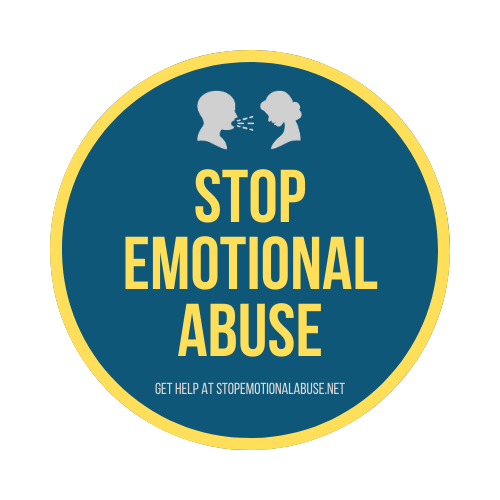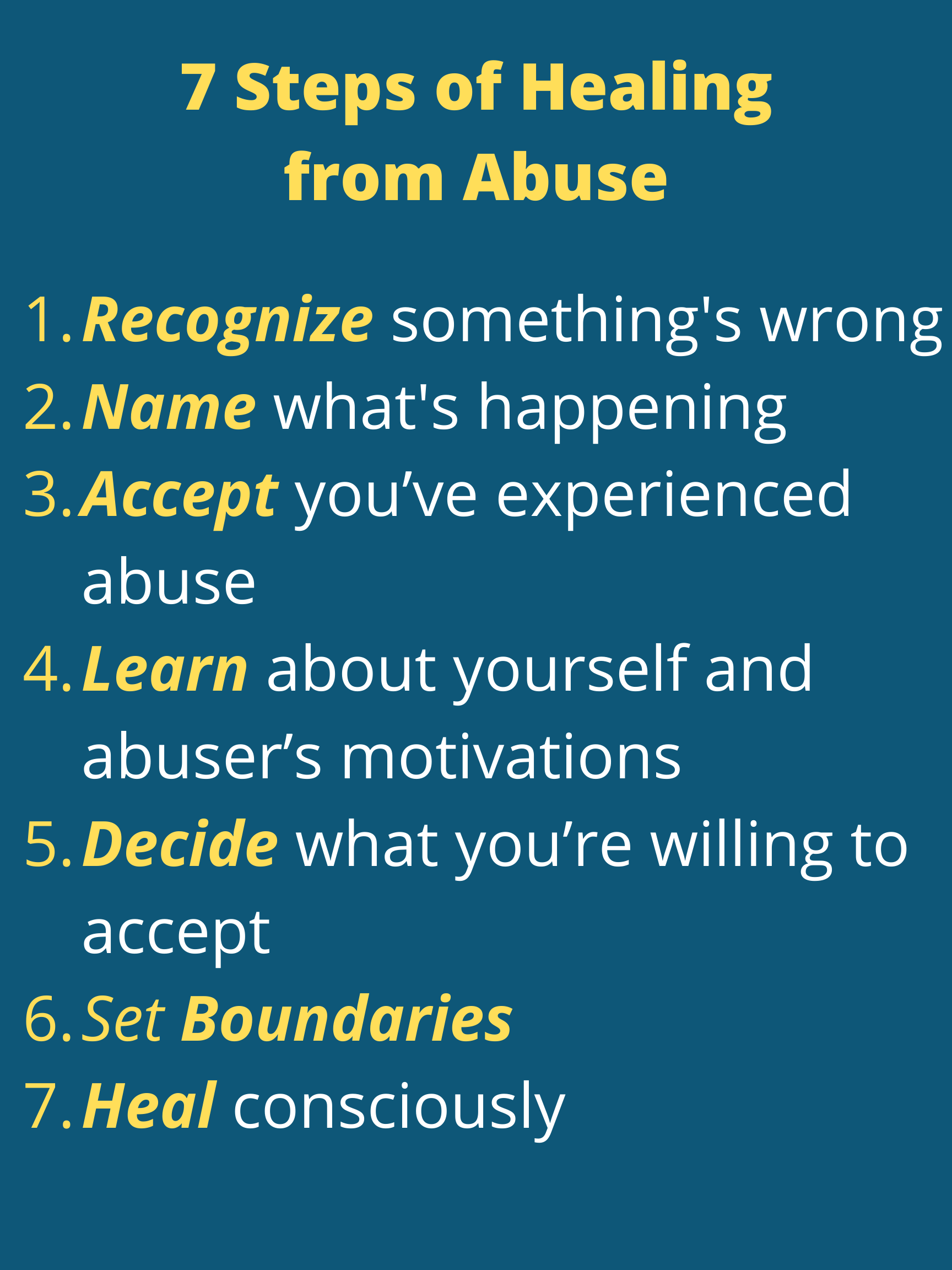Abuse Recovery Guide
Recognizing and putting an end to abuse is a difficult process. This guide will help you understand what steps to take during this confusing time.
1. ENSURE YOUR SAFETY
The first step is to make sure that you’re safe. If you feel you’re not in a safe situation, contact the local authorities, a trusted friend or spiritual leader, or the National Domestic Violence Hotline at 800-799-7233 or thehotline.org.
Create a ‘safety plan’ for how you can exit the situation if you need to. If you’re worried about your abusive partner using technology to spy on you and your online activities, visit the Resources page at stopemotionalabuse.net.
Consider creating a new email address to which you are certain your abuser does not have access.
Do not in any way tell your abuser you believe they are an abuser or that you’re seeking help. As you’ve come to figure out, they will use knowledge like that against you to further abuse you. If you feel guilty, like you’re ‘hiding’ information from them, you’re not. You’re protecting your own sanity. You’re getting help for the relationship. This is a good thing.
2. TRUST YOUR GUT
For years, you’ve been told how wrong you are about everything and that your feelings and intuition can’t be trusted. That’s wrong.
You need to get back to trusting your gut. If something doesn’t feel right, it’s not. If something makes you uncomfortable, there’s a reason.
Get back to listening to your natural intuition and what it’s telling you and then trust it. You have a right to your own feelings. You have a right to get the help you need. Don’t believe your abuser when they tell you otherwise or when tell you that “those people (counselors who can help you) are full of crap.”
They’re scared of losing control of you since control is their main driver (we cover this in detail in the abuse recovery program), so they want to keep you from sources of help. You deserve to get the help you need.
Journal your thoughts and feelings, wants, needs, and desires (see #4) to get reconnected to your inner feelings.
3. GET EDUCATED
Much of the confusion in an abusive situation comes from not knowing what abuse really is. Once you know what abuse is, you can label it and understand it for what it is, bringing clarity and hope.
Knowing the 7 Steps to Healing from Abuse is vital in this process, as each abused person must move through the steps at their own pace and moving forward in those steps is the only way to heal.
If you haven’t yet, visit the rest of the site StopEmotionalAbuse.net to help with that. Visit the Common Terms link and read the Articles.
The more you understand in clear terms what abuse is, what it looks like, how it’s been a part of your relationship, the easier it is to know what to do about it. Clarity is key. Spend as much time gathering information as you need.
4. DOCUMENT EVERYTHING
It’s important for your own sanity that you document what’s happening in your relationship. This will help you see clearly that you’re not going crazy. You have a right to capture your feelings and experiences. This will also prove helpful in getting the help you need because you will be able to more clearly explain what’s happening. Keep this journal in a safe place. Use a password protected document or Google documents if you think that can be kept safe.
Password protecting a Word document can be done through Tools—>Protect Document. Set a password that will be necessary to open the document any time someone wishes to access it. Never share that password.
If you’re afraid your abuser may track your use a device to which they don’t have access or another means they can’t access.
5. IMPLEMENT BOUNDARIES
Boundaries are simply getting clear on what you’re willing to live with and not live with and then deciding what you will do when someone crosses that line. For example, if you no longer want to get screamed at, you can set a boundary that you will walk away anytime your partner screams at you. You get to decide that.
Setting and sticking to boundaries will be difficult at first, so you may need some help. A qualified counselor can help you with this, as can the abuse recovery program (for much cheaper than a counselor).
6. MAKE A LIST
Over the months and years of abuse, your self-worth has taken a hit. In a moment of quiet reflection, make a list of all of the things you remember about yourself and what you like. Your strengths, gifts, talents, and abilities. Spend some real time developing that list.
Also, capture times you felt happy or proud. Times you really connected with another person. Times someone paid you a genuine complement. Physical features you’re happy about. Activities you enjoy or used to enjoy before the abuse. New things you’d like to try.
Making this list will lift your spirits and help give you the hope you need to move toward peace, freedom, and healing.
7. GET HELP
Getting educated on abuse and understanding your options is vital, as is getting the right help to know how to protect against future abuse and how to heal from it.
If you’re not sure where to start, begin by opening up to a trusted friend. Sometimes your religious leader (bishop, pastor, priest) can be of assistance. Other helpful steps to consider are group or individual therapy and an abuse recovery program.
Take the steps necessary to protect yourself from future abuse and get the help you need.
You deserve to get answers to your questions, feel safe again, and have peace.
You can be happy again. Check out the complete, online abuse recovery program No More Walking on Eggshells.




